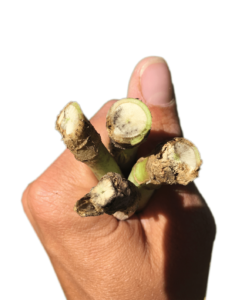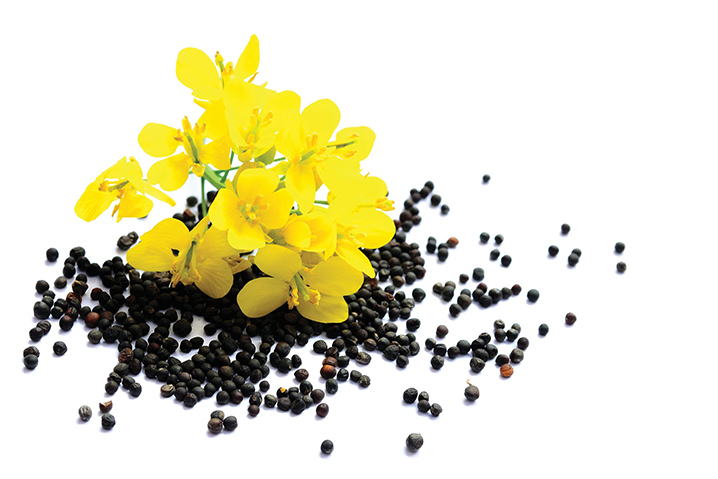Choose the best canola seed traits for each field
Canola Council of Canada (CCC) would like to see more farmers make canola seed decisions based on the best traits for each field. CCC agronomy specialists encourage growers to know the blackleg and clubroot scenario in each field and use that to select an appropriate source of resistance. Farms can also rotate herbicide tolerance (HT) systems based on the field’s weed situation, and use days to maturity and pod-shatter ratings to reduce harvest risk. Finally, by trying one or two new cultivars each year, growers can stay on top of trait improvements.
This case study describes the canola seed trait decisions for one farm and provides input from CCC agronomy specialists.
Name: Greg McCormick,
McCormick Brothers Farm
Location: Lloydminster, Saskatchewan
(one third of acres are in Alberta)
Soil zone: Black
Crops: Mostly canola and wheat, with some peas and barley
What canola cultivars did you grow in 2022 and 2021?
In 2022, we grew:
- InVigor L345PC – Liberty Link, slightly longer maturity,
R to blackleg and clubroot (first gen), Patented Pod Shatter Reduction technology - InVigor L255PC – Liberty Link, mid-season maturity, R to blackleg and clubroot (first gen), Patented Pod Shatter Reduction technology
- Pioneer Hi-Bred P505MSL – Liberty Link, mid-season maturity, “S” for sclerotinia resistance, R for blackleg, R for clubroot (pathotypes 2F, 3H, 5I, 6M and 8N, CR1), HarvestMax for flexible harvest timing
- Pioneer Hi-Bred P612L – Liberty Link, slightly longer maturity, R for blackleg, R for clubroot (pathotypes 2F, 3H, 5I, 6M, 8N, 2B, 3A, 3D (CR4)
In 2021, we grew:
- Pioneer Hi-Bred P506ML – Liberty Link, mid-season maturity,
R for blackleg, R for clubroot (pathotypes 2F, 3H, 5I, 6M and 8N –
CR1), HarvestMax for flexible harvest timing - Pioneer Hi-Bred P505MSL – See 2022 list
- InVigor L255PC – See 2022 list
- InVigor L345PC – See 2022 list
What is the strategy for growing that many cultivars?
A lot has to do with timing. We try to seed 1,200 acres in four days, but we don’t want them all ready to harvest at the same time. We had a rain delay this year, with 1.5 to two inches of rain shutting us down for three days, so it took longer than planned. Days to maturity for L345 is a bit earlier – 1.5 days – and we try to seed it first to make sure the difference is more pronounced by harvest.
We do straight cut, but it depends on the year. If canola is running late, we’ll swath. We generally don’t have a lot of wind problems, so it’s OK to swath. We will pick fields suitable for straight combining and desiccate them with a pre-harvest application.
We do not use Roundup Ready canola so we can keep glyphosate for other uses. Fields are pretty clean. Probably half the acres get two passes of Liberty, as needed.
All of our canola is clubroot resistant (CR) in 2022. This is new for us. Two years ago, we grew a little, but now all the canola around here is CR. The trait doesn’t mean you can go back to a 50-50 canola-wheat rotation. We have 1,200 acres of canola out of 3,600 total this year, up from 950 in 2021.
All Pioneer Hi-Bred canola seed comes with Lumiderm seed treatment, and it didn’t seem to help much last year with flea beetles. We definitely do see a higher probability of spraying fields for flea beetles when the rotation is canola-wheat than when the break between canola crops is longer.
How does the farm decide where to put each cultivar?
We don’t assign a specific hybrid to a specific field. It depends more on where we’re seeding. We try not to move the seeder around too much.
How does the farm measure the benefits of this strategy?
We assess each hybrid based on how the fall turns out. We were pretty happy with P505MSL last year, so switched quite a few acres to 505 in 2022. We try to grow a new one every year. This year we tried 30 acres of P612L. We usually try a quarter with each new one, but seed was limited.
What are the challenges with growing multiple cultivars?
Growing four versus one is not much of a challenge. The only difference is at seeding. We put in four bags of seed to calibrate the drill to make sure the seeding rate is where we want it. This takes some time, but this step is also required if you have different lots and seed sizes from the same hybrid.
CCC analysis of this practice
As part of our new case study approach, two CCC agronomy specialist will dissect Greg McCormick’s canola cultivar plan.
What do we like about McCormick’s canola cultivar plan?
Clint Jurke, CCC agronomy director, Lloydminster, Saskatchewan: I like what the McCormick brothers are doing. Growing CR across the farm is smart given one does not know if the clubroot pathogen is already present somewhere on the farm. Growing different cultivars also helps ensure that one is not likely to be using a single blackleg resistance trait. Using some sclerotinia stem rot resistance on their farm also helps manage sclerotinia risk.
Jason Casselman, CCC agronomy specialist, Cleardale, Alberta:
Growing several canola cultivars on the farm is a good strategy for spreading some of the risk on cultivar selection, knowing that we can’t predict what the growing season is going to give us. I like the idea of a farm growing a new canola cultivar every year. Take it for a test drive on land that is familiar to them and see how it performs against the rest of the cultivars in their lineup. McCormick makes an excellent point about calibrating the drill every time you change cultivars, but also when they get a different seed lot from the same hybrid. In a head-to-head race you want all the plants to have a fair chance at winning by getting them all to the starting line at the same time. Keeping track of some of the key performance indicators like disease resistance, stress tolerance, harvestability and of course yield, and comparing them on your own farm only builds confidence in cultivar selection for next season. Good scouting records and yield monitor data is invaluable when reviewing information at seed order timing. Seed companies are always trying to bring the best products to market that show value on the farm, so we do get to see a few new ones every year as the older products are replaced. It makes sense to know what is available and not get too committed to an old favourite that isn’t going to be around forever.
How could McCormick brothers take it to the next level?
Jurke: To get to the next blackleg level, selecting resistance for individual fields will help reduce blackleg risk even more. Testing for the presence of L. maculans races in the field and selecting cultivars with major “R” genes that will control the races will help ensure the risk remains low. The current use of cultivars without “R” gene identification means that it is a bit of a gamble if the resistance will match the pathogen in the field.
For clubroot, I do not think they can improve their strategy at the moment – they are at the highest level. For sclerotinia stem rot, using resistant cultivars on more acres can help reduce risk of this disease.
Casselman: Canola seed companies are always looking for co-operators to help with local demonstration plots. Some of these plots might include the newest genetics that are going to be on the market the following year. Hosting plots is a great opportunity to get an advance look at products further along the pipeline to see how they perform locally. Relationships that a farm has with local suppliers is built on trust and past performance, but I do see value in maybe trying a few bags of canola seed from a new supplier and to learn about some of the other products in the marketplace.

Clint Jurke says McCormick can “get to the next blackleg level” by selecting an appropriate resistance source for individual fields. This requires testing for the presence of L. maculans races in the field and selecting cultivars with major “R” genes that will control those races. For details, go to the Blackleg chapter in the Diseases section at canolaencyclopedia.ca. Look for the “Genetic resistance” heading.





